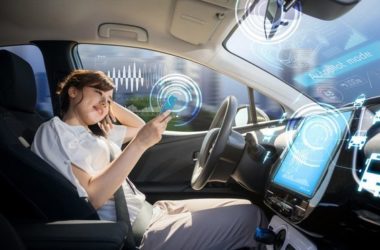The global pandemic has made lasting changes in societal behavior – well beyond replacing the handshake with the fist bump.
Indications suggest the pandemic caused a tipping point in digital advertising that will change the way companies large and small, including car dealerships, approach their ad spend.
Channel marketing might be dying. Not because the channels are bad, but because the overlapping spend is inefficient.
Dealers now have the ability to dial in digital ads, presenting the right car to the right customer on whichever channel is most profitable.
That sort of discipline in advertising strategy has never been more important than it is today.
According to a report by PQ Media, a firm that analyzes global media buying trends, overall advertising spending was down a sharp 7 percent in the U.S. in 2020, the first decline in 11 years.
But “consumer spending” on advertising was up nearly 6 percent. That accounts for less in traditional ad buys – such as TV and out-of-home – replaced by higher volume of online traffic consumption of programmatic ad placements.
With such an increase in online shopping and general web surfing, dealers should consider reviewing their strategies.
With the high volume of online shopping traffic, serving the right content to the right viewer at the right time is more critical than ever.
Media buyers today can isolate ad target demographics like never before.
That concept is pretty formulaic and relatively easy to execute for retail department stores stocked with thousands of identical products. But for a car dealership stocked with hundreds of unique high-dollar products, the stakes are much higher.
The traditional digital audience is still too broad and ad spending is not efficient. Social media platform algorithms, for example, default to high volumes, meaning if something is getting a lot of attention the system steers more eyeballs toward that post.
So if a dealer is advertising on a social site, the viewer of the site will see the hottest car on the lot, the one that would have sold virtually on its own. Meanwhile, an aged inventory unit that needs advertising help continues to be lost and often is discounted until it moves.
Fully 80 percent of a dealership’s ad budget goes to just 20 percent of its inventory, and 40 percent of a dealership’s inventory is never viewed during the course of a week.
Since we know 85 percent of vehicles are viewed just before they sell, we know a dealer can move more inventory by getting views on more inventory.
The new approach is to combine data – including dealer inventories, market trends and shopper insights – and connect specific buyers with specific VINs across the digital landscape.
By using VIN-specific advertising, dealers do not need to increase the overall spend or resort to deep discounts to move aged inventory. They can direct their existing advertising dollars to work for the VINs that need the support or have the greatest opportunity to hold more margin.
Artificial intelligence can deliver buyer demand directly to dealership inventory, thus boosting profitability.
While broadcast TV, radio, out-of-home and “shotgun” advertising are dipping, it’s not enough to simply move more budget to digital advertising. Digital has evolved and has its own inherent challenges to being seen by the right customers.
Rather than simply reducing ad spend out of frustration with poor results, or giving in to discounting vehicles to move inventory, there now exists the opportunity and the tools to leverage market data, refocusing a dealership’s advertising plan at the VIN level.
A proper digital advertising strategy driven by artificial intelligence can put advertising dollars to work with precision, accuracy and results.










